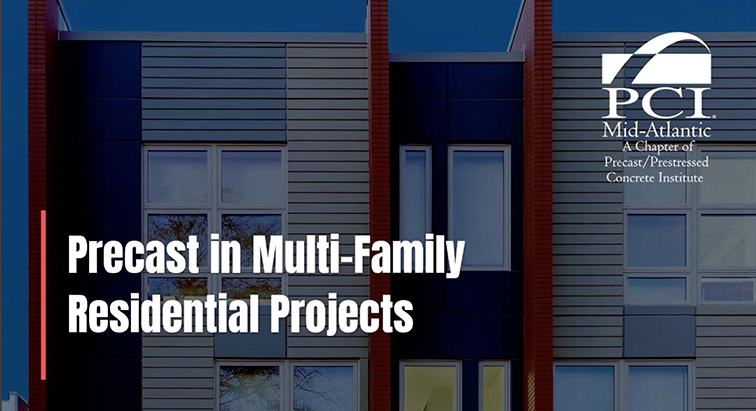There is a constant and growing demand for new, multi-family residences, and precast concrete brings many benefits to construction and the quality of life for building occupants, which is key to the success of these projects in particular. When determining where to live, families have stringent requirements for functionality and safety. With precast, building owners and landlords check off every one of their occupants’ boxes and then some.
While meeting certain aesthetic and design goals, precast concrete also provides a safe, long-lasting structure with thermal efficiency, protection from storms, face-sealed systems, and more. Above all, precast fosters a comfortable and safe environment for its dwellers.
We’ll explore how precast concrete benefits multi-family residences, so you can determine if it’s right for your next project. To learn more about precast concrete in apartments, lofts, duplexes, student housing, dormitories, and more, watch the video below.
Accelerated, Offsite & Prefabricated Construction
By nature, precast concrete accelerates construction timelines, which is imperative for projects set in urban, fast-paced environments. Compared to how long it takes and how much space is needed to build structures with other materials, such as cast-in-place concrete or hand-laid brick, precast dramatically reduces erection time and job site disturbance.
Prefabricating building components off site in temperature-controlled manufacturing facilities allows precast wall panels to be produced despite any and all inclement weather conditions, maintaining aggressive timelines and goals. Factory-controlled casting also ensures that every pour of concrete is the same and provides greater quality assurance.
Aesthetic & Structural Versatility
Precast reduces the need for other materials, and its end product is a durable, finished or paint-ready wall that can stay as is; but precast façades can be customized with colors and pigments, thin brick, textured finishes, sandblasting, and other design preferences. Not only does this give architects the freedom to meet design goals, but it also provides families with desirable spaces to call home.
Beyond appearance, precast concrete provides the structural versatility needed to meet important functionality goals. Prefabrication of concrete in factory-controlled environments supports the replication of panels when creating large modular spaces, and hollowcore floors provide exceptional sound attenuation. Precast’s inherent structural versatility allows teams to create luxury apartments, lofts, affordable housing, duplexes, student housing, dormitories, and other types of multi-family residences.
Multi-Hazard Protection, Health & Safety
Precast is a robust building material that offers multi-hazard protection against severe storms, hurricanes, tornados, earthquakes, and blasts, while meeting FEMA 361 guidance for safe rooms. It is a noncombustible material and upholds passive fire protection before occupants and systems are even aware of the danger.
Precast concrete provides continuous insulation, acting as a continuous air and vapor barrier all in the same wall panel system. This eliminates mold concerns and improves air quality. Precast concrete is also excellent for thermal performance, reducing operational costs and keeping residents comfortable year-round. Precast’s strength and durability make it a great alternative to traditional building materials for long-standing structures and a high quality of living for occupants.
Learn More About Precast, Prestressed Concrete
Review the benefits of precast, prestressed concrete in the video above and share it with your industry peers and clients to spread awareness of this innovative material.
Interested in learning more about precast and how the precasters of the PCI Mid-Atlantic Chapter support projects of all kinds? Explore the PCI Mid-Atlantic Solutions Center for helpful resources and get in touch with PCI-MA for precast information, higher education partnerships, and more.
Sources
Precast at Home in Multifamily Projects, High Profile, March 2013





